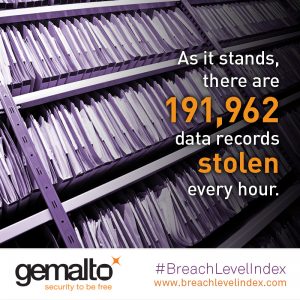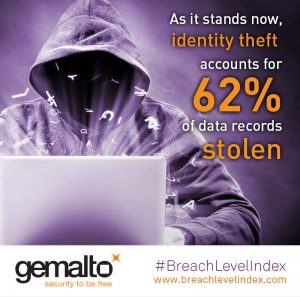Gemalto has released the findings of the 2016 Breach Level Index (BLI), revealing that Middle East data breaches are up 16.67 percent compared to 2015. Additionally, 45.2 million data records were compromised compared to 38.5 million in 2015, across the region.

Globally, 1,792 data breaches led to almost 1.4 billion data records compromised worldwide during 2016, an increase of 86 percent compared to 2015. Identity theft was the leading type of data breach in 2016, accounting for 59 percent of all data breaches. In addition, 52 percent of the data breaches in 2016 did not disclose the number of compromised records at the time they were reported.
The BLI is a global database that tracks data breaches and measures their severity based on multiple dimensions, including the number of records compromised, the type of data, the source of the breach, how the data was used, and if the data was encrypted.
By assigning a severity score to each breach, the BLI provides a comparative list of breaches, distinguishing data breaches that are a not serious versus those that are truly impactful (scores run 1-10).
 According to the BLI, more than 7 billion data records have been exposed since 2013 when the index began benchmarking publicly disclosed data breaches. Breaking it down that is over 3 million records compromised every day or roughly 44 records every second.
According to the BLI, more than 7 billion data records have been exposed since 2013 when the index began benchmarking publicly disclosed data breaches. Breaking it down that is over 3 million records compromised every day or roughly 44 records every second.
“The Breach Level Index highlights four major cybercriminal trends over the past year. Hackers are casting a wider net and are using easily-attainable account and identity information as a starting point for high value targets,” said Sebastien Pavie, Regional Director, MEA, Identity and Data Protection, Gemalto. “Clearly, fraudsters are also shifting from attacks targeted at financial organisations to infiltrating large data bases such as entertainment and social media sites. Lastly, fraudsters have been using encryption to make breached data unreadable, then hold it for ransom and decrypting once they are paid.”

The healthcare industry accounted for 28 percent of global data breaches, rising 11 percent compared to 2015. However, the number of compromised data records in healthcare decreased by 75% since 2015. Education saw a 5 percent decrease in data breaches between 2015 and 2016 and a drop of 78 percent in compromised data records. Government accounted for 15 percent of all data breaches in 2016. However the number of compromised data records increased 27 percent from 2015. Financial services companies accounted for 12 percent of all data breaches, a 23 percent decline compared to the previous year.
Across industries, the technology sector globally had the largest increase in data breaches in 2016. Breaches rose 55 percent, but only accounted for 11 percent of all breaches last year. Almost 80 percent of the breaches in this sector were account access and identity theft related. They also represented 28 percent of compromised records in 2016, an increase of 278 percent from 2015.





